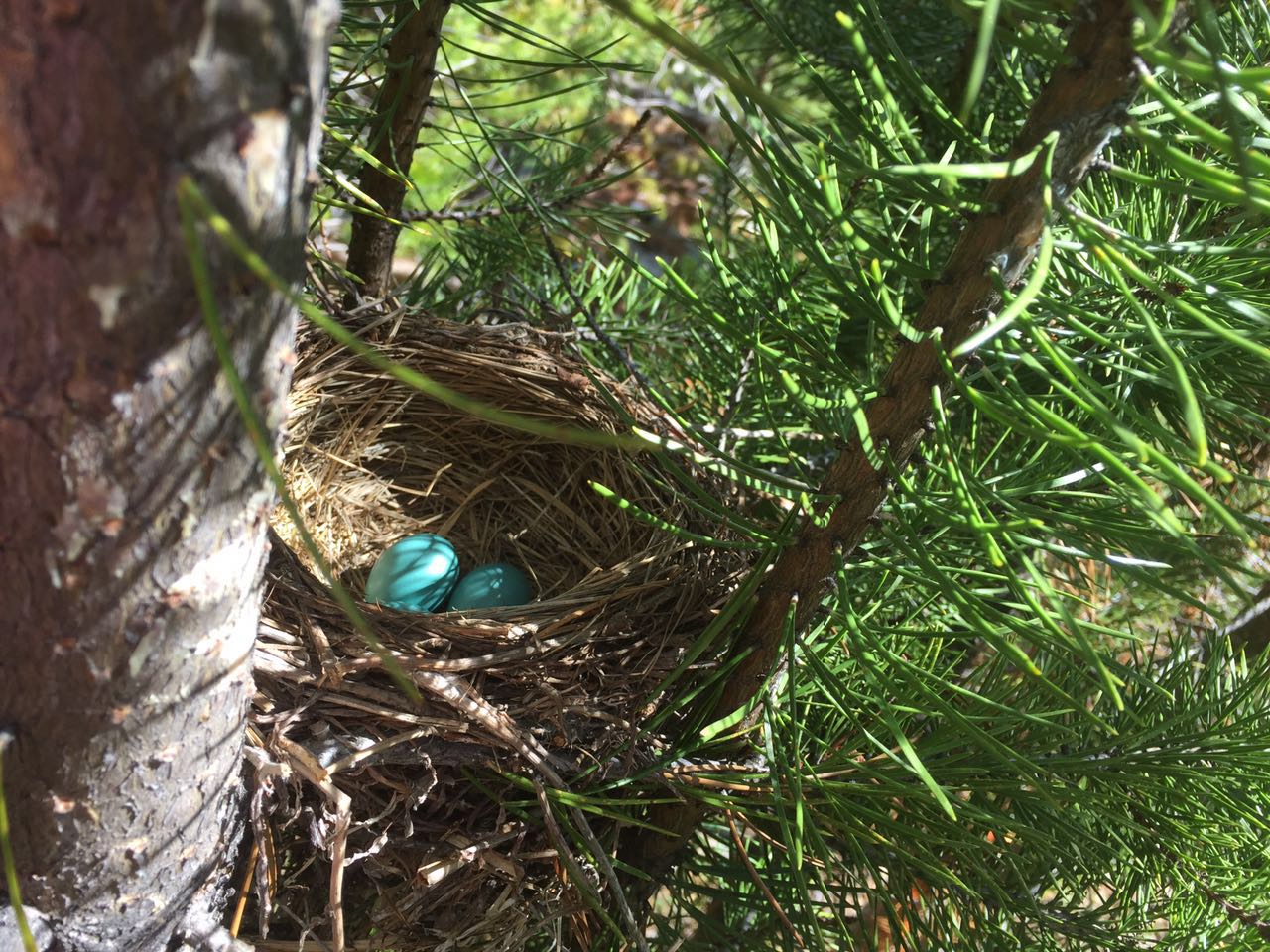自从弃用了某个标记书影音平台之后,我决定在个人网站单独开一篇文章来记录一些零零碎碎的读后感。我给这篇文章起名叫寻绎,因为《说文》:“绎,抽丝也”。我怀着一份妄想,希望能顺着这些七零八碎的思想线头找出的人生终极的解答。读书纯属自娱,想法绝对主观。好在心胸还算开阔,心态还算平和,不怕批评,无意冒犯,欢迎评论交流。
After discontinuing the use of a particular bookmarked platform for books, I have decided to dedicate a standalone article on my personal website to document various reflections after reading. I’ve chosen to title this piece ‘Seeking Threads,’ inspired by the definition in ‘Shuowen Jiezi’ (an ancient Chinese dictionary completed around the year 100 AD). My hope is to follow the threads of these scattered thoughts and uncover life’s ultimate answers. Reading is purely for my personal enjoyment, and my perspectives are entirely subjective. Feel free to share your comments and engage in discussions. Your ideas and perspectives are welcomed and valued.
2022.05.08 穆勒《论自由》John Stuart Mill’s “On Liberty And Utilitarianism”:读到个性自由的一章,书里写道:“但是有些人,尤其是女人,却会因为做了‘众莫肯为’之事,或竟而不肯去做‘众皆争从’之事而遭到谴责,简直就像犯了某种严重的道德罪行一样,成为讥评的主题。” 穆勒写这段话在19世纪…如今社会进步了吗?!!In the chapter on individual freedom, Mill articulates that certain individuals, particularly women, might attract censure for engaging in actions deemed unconventional, or even more so for abstaining from actions considered customary, as if they had committed a grave moral transgression, becoming the target of criticism. Mill penned these words in the 19th century. Has societal progress been achieved since then?
2022.06.04 穆勒《论自由》John Stuart Mill’s “On Liberty And Utilitarianism”:读完了一整本书,明白了穆勒想阐述的自由的界限。遗憾的是,如今的我们在虚拟的世界里都已经没法自由地标记自己读过的书了。Having completed an entire book, I’ve gained a nuanced understanding of the boundaries of freedom that Mill sought to elucidate. Unfortunately, we no longer have the freedom to freely mark the books we’ve read in certain countries.
2022.08.17 伍尔夫《一间只属于自己的房间》Virginia Woolf’s “A Room of One’s Own”:惊叹于伍尔夫敏锐的文学鉴赏力、观察力和深厚的文学功底。读这本书,就像跟着这位19世纪的女子,行走在城市、公园、学校和图书馆,经历和思考女性与小说的联系,以及两种性别的关系;又像看着她不急不慢地建造一座只为女性建立的文学殿堂,看着论点的地基深深插入地下,论证向四周缓缓铺陈开来,又随着论据的叠加越积越高,越来越快,最后汇集在穹顶上,倾泻出智慧的光芒。希望未来这样的殿堂越来越多,希望每个女孩都有一间属于自己的房间,一笔让自己的心智和才华无拘无束发展的收入,享受着世界最美好的自由和爱。I am deeply impressed by Woolf’s acute literary appreciation, powers of observation, and profound literary prowess. Reading this book is akin to journeying alongside this 19th-century woman, traversing cities, parks, schools, and libraries, experiencing and contemplating the intricate relationship between women and novels, as well as the dynamics between the two genders. It’s reminiscent of watching her methodically construct a literary haven exclusively for women, witnessing the foundations of her arguments deeply embedded in the ground, the exposition of her reasoning spreading methodically in all directions. It unfolds with the gradual accumulation of evidence, growing higher and faster, eventually converging at the summit and pouring forth the radiant light of wisdom. I am hoping that there will be an increasing number of such havens in the future, desiring that every girl possesses a room of her own, an income that liberates her intellect and talents boundlessly, allowing her to bask in the world’s most beautiful freedom and love.
2022.08.27 萨拉马戈《失明症漫记》 José Saramago’s “Blindness”:几点思考: 1. 对比2022年发生的一些事情,我觉得萨拉马戈是一位预言家。遗憾的是,也许是由于书里失明症蔓延得太快,没有给哄抬物价的人表现的空间 LOL. 2. 故事还可以再黑色幽默一些。按照现在的潮流,医生的妻子应该拿大女主剧本:和出轨的医生决裂;反杀欺辱她和隔离所女人们的恶人帮;再带领所有的女性突破压迫;建立互帮互助自给自足的组织… 3. 萨拉马戈还是太温情了,不够愤怒。尽管书里是糟糕混乱的世界,里面依然有不离不弃的守护(比如医生的妻子对所有人,亦或者戴墨镜的女孩对斜视小男孩),跨越鸿沟的爱情(戴眼罩的老人和戴墨镜的女孩),以及皆大欢喜的结局(所有人恢复视力)。My reflections: 1. Comparing with some events in 2022, I feel that Saramago is like a prophet. Perhaps due to the swift spread of blindness, there was no room for those inflating prices to make their mark in the book 😉 2. The narrative could have delved even deeper into dark humor. For example, aligning with the prevailing trend of net literature , the doctor’s wife could have embraced a more prominent heroine character who could have broken up with the unfaithful doctor; retaliated against the villain group who isolated and insulted women in quarantine zone, and then lead all women to liberate themselves from oppression, establishing a self-sufficient mutual aid society… 3. Although this book satirizes societal realities and human nature, it remains very heartwarming, concluding with a universally happy ending.
2022.10.24 丹 西蒙斯 《海伯利安》Dan Simmons’s “Hyperion”
:神作,第一次体会到了太空歌剧的魅力。最喜欢十字形和领事的故事。有空要去读济慈的关于海伯利安的诗。It is a masterpiece! I was my first time to experience the charm of space opera. I especially love the stories of the Priest and the Consul. I plan to read Keats’ poems about Hyperion when I have time.
2022.10.26 威廉 吉布森《神经漫游者》William Gibson’s “Neuromancer”
:朋友推荐好多年了,趁着刚读完《海伯利安》,赶紧把这本也读完了,正好可以对比一下两个开山之作。《神经漫游者》无拘无束的想象力令人惊叹。文笔有点天马行空,有些地方可能是翻译的问题,觉得有些不清不楚。比如最后的密码…是蜂巢吗?相比之下,我更喜欢《海伯利安》的文学底蕴和包容万象。It is the book that one of my friend recommended to me for many years. Since I just finished reading “Hyperion”, I think it is a good opportunity to compare these two pioneering works. “Neuromancer” showcases an unfettered imagination that is truly astonishing. The writing style is a bit fantastical, and in some places, it is unclear probably due to translation. For example, the final code… is it “hive”? Anyway, I prefer the literary depth and all-encompassing nature of “Hyperion”.
2022.11.01 齐泽克《齐泽克的笑话》Slavoj Žižek‘s Jokes: Did You Hear the One About Hegel and Negation?”:幽默、有趣。字数很少但是信息量极大。这本书是齐泽克‘我们“感到自由”是因为我们缺乏恰当的语言来表达我们的不自由。’的出处。配合纪录片《变态者意识形态指南》,阅读体验更佳。我读的是于东兴翻译的版本,书最后有一篇莫墨斯的编后记,用一个“汉娜的洋娃娃”的笑话巧妙地串起了本书列举的所有笑话里传达的关于辩证、逻辑、意识形态的事实和荒诞,妙极了。The book is witty and entertaining. Despite its brevity, the book carries a wealth of information. This work is the origin of Slavoj Žižek’s statement ‘We feel free because we lack the very language to articulate our unfreedom.’ Reading it in conjunction with the documentary “The Pervert’s Guide to Ideology” enhances the overall experience. I read the version translated by Yu Dongxing, and the book concludes with a postscript by Momus, skillfully weaving together all the jokes mentioned in the book through a clever joke about “Hannah’s doll.” This effectively conveys the facts and absurdities surrounding dialectics, logic, and ideology, making it truly ingenious.
2022.11.12 戴蒙德 《枪炮、病菌与钢铁》Jared Diamond’s “Guns, Germs, and Steel”
:详细地阐述了地理如何影响农业生产,进而影响社会形态、制度的演化,因此形成了如今世界的强弱富穷的分布。总体阅读体验很流畅,但有些部分稍显啰嗦。作者谈及的关于先发明,再给发明的东西指定用途的说法打破了我长久以来的刻板观点。另外,作者还谈及了生物多样性对人类社会发展的影响,令我不禁想到,在物种大灭绝的现代,我们是否在为未来与外星人的竞争(如果有的话…) 自掘坟墓?最后,作者谈及日本人的起源也非常有意思,原来日韩有可能本是一家。This book meticulously explains how geography influences agricultural production, thereby affecting the evolution of social forms and systems, giving rise to the current global distribution of strength and wealth. The overall reading experience is quite smooth, though some parts may be a bit verbose. The author’s discussion of the concept of inventing first and then assigning a purpose to the invention challenges my long-standing stereotypes. Additionally, the author explores the impact of biodiversity on the development of human societies, making me ponder whether, in the modern era of mass extinctions, we are digging our own graves in the competition for the future, perhaps even with extraterrestrial beings (if they exist…). Finally, the author’s discussion of the origins of the Japanese people is also fascinating, revealing the possibility that Japan and Korea may have shared a common ancestry.
2022.11.22 上野千鹤子、铃木凉美《始于极限》Letters Between Chizuko Ueno and Ryomi Suzuki:不由感叹这是一场两代人之间绵里藏针却又不乏温暖鼓励的对谈。上野千鹤子直率犀利,铃木凉美聪明坦然。交谈里有很多令我醍醐灌顶的点,比如所谓的情色资本其实是情色商品;恋爱是我们受到伤害也互相伤害以借此摸清彼此的自我底线的过程;又比如何为表达的自由,以及”结构与主体“的关系。除此之外,她们关于”表达“的讨论使我深深获益,比如凉美谈到,如果表达能够足够准确精炼,就能避免被肆意曲解。还有上野千鹤子说不要低估读者,写文章时要想一下是写给谁看,勾勒出读者的模样。希望两位优秀的女子都务必珍重,期待她们新的作品。One can’t help but marvel at this dialogue. Chieko Ueno is candid and wise, while Ryomi Suzuki is intelligent and frank. Their conversation is filled with enlightening points, such as the realization that erotic capital is essentially erotic commodities. They delve into the notion that love is a process where we both get hurt and hurt each other to explore personal boundaries. The discussion also covers the freedom of expression and the intricate relationship between “structure and subject.” Moreover, I was greatly enlightened by their discourse on “expression”. Ryomi Suzuki notes that if expression is precise and refined enough, it can avoid arbitrary misinterpretation. Chieko Ueno emphasizes not underestimating the reader, encouraging writers to consider their audience and vividly imagine the faces of their readers. I sincerely hope these two exceptional women take good care of themselves, and I eagerly anticipate their future works.
2022.11.30 玛拉·J. 哈尔特《海洋中的爱与性》Marah J. Hardt’s “Sex in the Sea”:很好的科普文,有趣又学习了很多的知识,并且对如何保护海洋生物有了更深的理解。以后买海鲜时会关注This Fish 和Follow Fish 等生态支持型的机构。The book is entertaining and informative. I’ve gained a lot of knowledge and developed a deeper understanding of how to protect marine life. In the future, when buying seafood, I’ll pay attention to eco-friendly organizations like “This Fish” and “Follow Fish.”
2022.12.27 柏拉图《理想国》Plato’s “Republic”:以对话的形式,借用苏格拉底之口,循循善诱地说明为什么人以及城邦要追求正义。总的来说,柏拉图认为人要追求正义的生活,保持灵魂里理性的部分统治不理智的部分。理想的城邦亦是如此。这本书是精华和糟粕都很明显的典型。精华之处在于对真善美的颂扬以及对事物“理念”和“影子”的辨析,而糟粕之处在于对底层人、女人的贬低。很多处论证在我看来是诡辩了,然而瑕不掩瑜,是一部经典之作。This book, presented in the form of a dialogue between Socrates and other thoughtful people, to elucidate the reasons why individuals and the city-state should pursue justice. In essence, Plato argues that individuals should aspire to live justly, maintaining the dominance of reason over the irrational aspects of the soul. The ideal city-state should adhere to the same principle. This book is a quintessential example where both the essence and flaws are readily apparent. The essence lies in the celebration of truth, goodness, and beauty, as well as the analysis of the concepts of “ideas” and “shadows.” The flaws, however, manifest in the disparagement of the lower class and women. Many arguments, in my opinion, resort to sophistry; yet the flaws do not overshadow its merits.
2022.12.31 李沧东《鹿川有许多粪》 Lee Chang-dong’s “Nokcheon Has Fields of Shit”:一共有5篇短篇小说,最好看的莫过于《鹿川有许多粪》和《天灯》。个人感觉《天灯》更打动我,也许是我与信惠有一些相似的困惑,信念不够坚定,不够勇敢,时时刻刻都在挣扎。在我看来,5篇小说都在探求何为真实的生活,尤其是在所有人都无法避免地被卷入社会运动的大漩涡中,如何才能在真实和谎言中寻找一条自我和解的道路。书里的每一个人最终都走上了在旁人看来无法理解的道路,是非对错无法评价,只留一声叹息。There are a total of five short stories, and the most compelling among them are “Nokcheon Has Fields of Shit” and “Sky Lantern.” Personally, I find “Sky Lantern” more impactful, perhaps because I share some similar perplexities with Shin Hye – a lack of firm convictions and courage, a constant struggle. In my opinion, all five stories delve into the quest for what constitutes a genuine life, especially when everyone is inevitably drawn into the vortex of social movements. How does one navigate between truth and lies to find a path towards self-reconciliation? It is sad to see each character in the book eventually takes a route that where moral judgments become elusive.
2023.01.23 冯友兰《中国哲学简史》Feng Youlan’s “A Short History of Chinese Philosophy”:非常简练地阐述了先秦以来思想体系的发展,着重解释了儒家是如何与道家、佛家思想碰撞与结合,并不断发展。我最惊喜地是了解了”名家“这一思想学派,因为正好之前读了柏拉图的《理想国》,甚觉名家关于理念与事物的区别和柏拉图哲学有异曲同工之妙。可惜名家在历史长河里只昙花一现,否则我国的哲学发展很可能能走上逻辑分析的道路。另一个惊喜,是关于冯友兰对中国哲学的总结:”既是出世的,又是入世的“,令我拍案叫绝。这种既出世又入世的精妙,正是我痴迷哲学的原因。与王国维对哲学的无可奈何不同,哲学于我是立身处世的解药(入世)和精神境界的补药(出世),我从来不觉得其无用。最后,冯友兰说:”人必须先说很多话然后保持静默。”虽不知哲学将引领我去往何方,但我抵达保持静默的境界前,我希望自己能说很多很多话。This book concisely elaborates on the development of philosophical systems since the pre-Qin period, with a particular focus on how Confucianism interacts, clashes, and integrates with Daoism and Buddhism, evolving continuously. I was most pleased to learn about the “School of Names” philosophical school, especially because I had previously read Plato’s “Republic” and found parallels between the School of Names’ distinction between ideas and things and Platonic philosophy. Unfortunately, the School of Names had only a fleeting presence in the river of history; otherwise, Chinese philosophy might have embarked on the path of logical analysis. Another revelation was Feng Youlan’s summarization of Chinese philosophy: “both transcendent and immanent,” which left me in awe. This delicate balance between transcendence and immanence is precisely why I am passionate about philosophy. Unlike Wang Guowei’s sense of helplessness towards philosophy, I see philosophy as both a remedy for practical living (immanence) and an elixir for spiritual elevation (transcendence); I have never considered it useless. Lastly, Feng Youlan remarks, “One must speak a lot before maintaining silence.” Though I don’t know where philosophy will lead me, before reaching the state of silence, I hope to speak a great deal.
2023.03.28 蒂莫西·费里斯 《望向星空深处》Timothy Ferris’s “Seeing in the Dark:How Backyard Stargazers”:不负盛名的科普神作!!!不忍卒读。这本书的语言极其优美,星空的浪漫和人文的情怀交相辉映。作者旁征博引,却又不显枯燥,搭配着独特有趣的个人经历,让每一个故事都生动非凡。不仅如此,每篇章节的安排都按照一篇科普散文配上一篇人物随笔,时间上是从以前到现在,空间上是从近地球到深空,构思之精巧令人惊叹。阅读后认识了许多有趣的宇宙知识,印象最深的是奥尔特云。书后还附有详细的观星指南,真的忍不住想买英文版收藏。A renowned masterpiece in popular science!!! The language in this book is exceptionally elegant, with the romance of the stars and the human touch blending seamlessly. The author skillfully weaves in references, keeping it engaging and never dull. Accompanied by unique and amusing personal experiences, each story becomes exceptionally vivid. What’s more, the arrangement of each chapter pairs a popular science essay with a personal essay, spanning from the past to the present and from near-Earth to deep space. The ingenious design is truly impressive. After reading, I’ve acquired knowledge about many intriguing cosmic facts, with the most memorable being the Oort Cloud. The book also includes a detailed stargazing guide, making me irresistibly tempted to buy the English version for my collection.
2023.04.17 翁贝托·埃科 《玫瑰的名字》Umberto Eco’s “The Name of the Rose”:开头几章很难读,因为文中充满了天主教的历史和文化,非常晦涩。但是读到威廉和阿德索发现藏书馆有密室以及连续死亡的案件的发生符合《启示录》时,情节开始变得很精彩。故事在两个教团会面时达到高潮,尤其是修士们关于是否守贫,如何对待异教徒,以及如何对待知识的演讲读起来令人心潮澎湃。很多人说这是一部反侦探小说,我很认同。因为威廉作为深受罗杰培根影响,具有科学启蒙思想的人文主义知识分子,过分相信理性的力量,认为事件发生存在规律。然而,威廉查明真相完全是歪打正着,且最终的凶手其实只杀了自己而已,与其他的案件并不直接相关,真是印证了这本书讨论的主题:宇宙是无序的。其实再进一步想想,也正是因为博学的凶手认识到了了这一点,再加上有亚里士多德的作品加以刺激,深感若让这本书流传会撼动信仰的根基,才有了后续的悲剧。总之,整本书包容万象,还谈到了上帝之爱与肉体之爱、同性、禁欲与放纵、世俗权力与神学权柄、宝石的鉴赏等,我认为是探案版的《追忆似水年华》。The initial chapters were challenging to read as they were filled with the history and culture of Catholicism, making it quite obscure. However, as the plot unfolds with William and Adso discovering a secret room in the library and a series of deaths aligning with the Book of Revelation, the story becomes captivating. The climax occurs when the two religious orders converge, particularly the monks’ discussions on poverty, the treatment of non-believers, and the approach towards knowledge are riveting. Many describe this as an anti-detective novel, a sentiment I agree with. William, influenced by the humanistic ideals of Roger Bacon and overly reliant on the power of reason, believes that events follow a logical pattern. However, William stumbles upon the truth, and the actual murderer only ends up killing themselves, unrelated to the other deaths, affirming the theme discussed in the book: the universe is chaotic. Upon further reflection, it’s the erudite murderer’s realization of this chaos, stimulated by Aristotle’s works, coupled with the fear that the book’s dissemination would shake the foundations of faith, that leads to the tragic aftermath. In summary, the book covers a myriad of topics, delving into God’s love and physical love, homosexuality, asceticism and indulgence, secular power and theological authority, gem appreciation, and more. I see it as a detective version of “Remembrance of Things Past.”
2023.04.21 格拉宁《奇特的一生》Daniil Granin’s “Alexandrovich Lyubishchev’s better life method”:描写前苏联生物学家柳比歇夫的“传记”。作者认为柳比歇夫的一生奇特,是因为柳比歇夫对自己的时间进行规划、记录和总结,一丝不苟。我给传记加引号,是因为这本书并非严格意义的传记,全书只专注在柳比歇夫的时间统计法,而且含有作者大量的主观评论。这样的写作方法很独特,但不是我的菜。时间统计法也不适用于我。我喜欢自己的时间灵活且自由,浪费就浪费吧。This is a “biography” of the Soviet biologist Alexandrovich Lyubishchev. The author considers Alexandrovich’s life to be extraordinary because he meticulously planned, recorded, and summarized his time. I put “biography” in quotes because this book is not strictly a biography; it solely focuses on the time management method and contains a significant amount of the author’s subjective commentary. This writing approach is unique but not to my liking. The time management method is also not suitable for me. I prefer my time to be flexible and free.
2023.08.14 丹 西蒙斯 《海伯利安的陨落》Dan Simmons’s “The Fall of Hyperion”
:没有第一部写得精彩。用济慈的赛博人格串起整个故事的确构思巧妙,然而,逻辑却经不起推敲,比如为何济慈人格能梦见所有朝圣者经历的事情?又比如,人类之神“共情”据说也是溯时光而来,为何到最后是拉米亚和乔尼的孩子?看来还得继续读第三部才行。This is the second part of the entire Hyperion series. It isn’t as brilliantly written as the first part, Hyperion. While the clever idea of intertwining the entire story with Keats’ cyber-personality is well-conceived, the logic doesn’t hold up under scrutiny. For instance, why can Keats’ personality dream about everything the pilgrims experienced? Additionally, the supposed divine power of “empathy” in humans is said to come from the distant past, so why does it end up with the child of Lamiya and Johnny? I have to continue reading the third part to find answers.
2023.08.23 《图说哲学》:回家看的闲书,书名是哲学,其实里面讲的是哲学家的逸闻轶事,很浅显,有些段落七拼八凑,不知所云。对了解哲学帮助不大。唯一的亮点是很多彩图。
2023.08.26 《视读东方哲学》:还是回家看的闲书,编者是西方媒体人,书里主要介绍的是印度和中国的宗教。我对佛教之类的了解甚少,所以这本书令我收获很多。但书里关于中国哲学的介绍,参考了很多冯友兰的《中国哲学简史》的内容,因此我并没有从中了解到新的知识。但是这本书的有一个两点,是在介绍印度种姓制度时特别地让读者去思考女人属于什么种姓。这一点值得赞扬。
2023.08.28 列维特和都伯纳《魔鬼经济学》Freakonomics by Stephen J. Dubner and Steven Levitt:是一个扩展思路的小册子,有意思但是论证不够严格,可能是与其作为科普读物有关,无法给予严格的科学论证。It is interesting but lacking rigorous proofs.
2023.11.10 陀思妥耶夫斯基《群魔》Fyodor Dostoevsky’s “Demons”: 目前只看了一半左右,书里的恶魔们还没露出马脚。个人感觉这本书比《白痴》好看,但比不上《罪与罚》。I’ve only read about half of it so far, and the demons in the book haven’t revealed their true colors yet. Personally, I find this book more enjoyable than “The Idiot” but not quite up to the level of “Crime and Punishment.”
2023.12.24 陀思妥耶夫斯基《群魔》Fyodor Dostoevsky’s “Demons”: 终于读完了!后半部分的剧情比前半句精彩得多,尤其是临近结尾的连续死亡事件,让我觉得这个五人小组真是阴险得令人遍体生寒。总的来说,阅读体验并不是很好,因为小说的主要人物都不讨喜。韦尔霍文斯基父子是迄今为止令我最讨厌的小说人物了。一个又装又油,一个阴险恶毒,另一个主要人物,斯塔夫罗金,则是阴晴不定,莫名其妙。 但是他们都不是好人,是陀老所说得“群魔”。这些“恶魔”们举着自由的旗号,扰乱社会,害人害己,是影响社会正常运行的毒瘤。此外,延续陀老一贯的风格,这部小说也着眼于上帝是否应该存在的争论。基里诺夫想验证上帝不存在,决定自杀成神。斯塔夫罗金摇摆在信与不信之间,心灵饱受折磨,最后也选择自杀。老实说,我从来没有想过上帝存在与否是如此重要的命题,但是我在小说中读懂了失去信仰的恶果——恶念丛生、道德败坏。
Finally finished reading! The latter half of the plot was much more exciting than the first half, especially the series of deaths towards the end, which made me feel that this group of five was so sinister that it sent chills down my spine. Overall, the reading experience wasn’t great because the main characters of the novel were not likable. The Verhovensky father and son are by far the most detestable characters I’ve encountered in a novel. One is pretentious and oily, the other is sinister and vicious. And another main character, Stavrogin, is fickle and inexplicable. But they are all not good people, the ‘demons’ as Dostoevsky described. These ‘demons,’ waving the banner of freedom, disrupt society and harm others and themselves, acting as a cancer that affects the normal functioning of society. Additionally, in keeping with Dostoevsky’s usual style, this novel also focuses on the debate over whether God should exist. Kirillov wants to prove God doesn’t exist by committing suicide to become a god. Stavrogin swings between belief and disbelief, his soul tormented, and in the end, he also chooses suicide. Honestly, I never thought the existence of God was such an important proposition, but in the novel, I understood the evil consequences of losing faith—evil thoughts and moral decay.
2024.01.16 陀思妥耶夫斯基《死屋手记》Fyodor Dostoevsky’s “The House of the Dead “:这本书是我读过的陀老的书中最细腻最真挚动人的一部了。能看得出陀老的哲学思想与他的监狱经历密不可分。书里记载了监狱里的众生百态,是一群已经放飞自我的罪犯在不能放飞自我的情况下放飞自我的故事。这些故事令人匪夷所思,但仔细一想他们的社会背景和自身经历,又不由得可笑可叹。
This book is the most delicate and genuinely moving one that I have read among Dostoevsky’s works. It’s evident how his philosophical thoughts are inextricably linked to his prison experiences. The book recounts the various facets of life in prison. These stories are astonishing, yet when one considers their social backgrounds and personal experiences, they make me feel ridiculous and sad at the same time.
2024.02.05 劳伦斯·C.史密斯 《河流是部文明史》Laurence C. Smith’s “Rivers of Power: How a Natural Force Raised Kingdoms, Destroyed Civilizations, and Shapes Our World”: 这本书是跟我研究最相关的一本科普读物了。尽管我也是水文学领域的研究者,对水文的一些基本知识了如指掌,我仍然在这本书中学到了很多有趣的知识,获得了很多启发。我觉得最有意思的章节是关于河流对战争的影响的那部分,尤其是讲述到中国抗日战争时期,国民党党炸毁了河南黄河的堤坝,导致数百万人流离失所。此举也导致其在接下来的国共战争中失去了民心。这个叙述的角度我从未思考过,但它令我想起了一些爸爸曾经跟我说过的关于老家的故事。我的爷爷住在苏北的淮河流域的一个小村庄。物资稀缺的年代爷爷奶奶撑着船一路从村里去南京讨生活。后来日子渐渐变好,他们回到了村里,那时的村子是被水淹着的,在村子里走家串巷都靠划船。有次爷爷喝醉了酒独自划船回家结果半路掉进了河里,把家里人吓得半死,发动了全村了去捞爷爷,幸好爷爷最后没事。我每每回老家,都很难相信爷爷家门前覆盖了水葫芦的绿色河流曾淹没过整个村庄。也曾载着无数战火中流离失所的人们奔向希望之地。我不知道当年的河水泛滥是不是与国民党政府炸毁堤坝有关,但我从书里了解的知识令我想起了遥远的回忆。去年的夏天我回了一趟老家,看到了那条河流的岸边立了个碑,上面写着河长的名字和所属河流的所属的管理部门,河流里的水葫芦也少了很多。这些与书里介绍的中国的河长制一一对应。我十分佩服史密斯博士的博闻强识,也十分惭愧于自己对老家的忽视。
This book is the most relevant popular science book to my research. Although I am also a researcher in the field of hydrology and have a good grasp of some basic knowledge of hydrology, I still learned a lot and gained a lot of inspiration from this book. The most interesting chapter to me is about the impact of rivers on wars, especially the part that talks about the period of the Second Sino-Japanese War, when the Kuomintang government blew up the dams of the Yellow River in Henan, causing millions of people losing their homes. This action also led to the loss of public support for Kuomingtang government during the subsequent Chinese Civil War between it and the Chinese Communist Party. I had never considered this perspective before, but it reminded me of some stories my dad used to tell me about his hometown. My grandfather lived in a small village in the Huai River basin in northern Jiangsu. In the years when food were extremely scarce, my grandparents took a boat from the village to Nanjing to make a living. Later, as life gradually improved, they returned to the village, which was flooded at that time, and moving around the village relied on boats. Once, my grandfather, drunk, fell into the river while rowing home alone, scaring the family half to death, asking for the whole village to rescue him. Fortunately, my grandfather was fine in the end. Every time I return to my hometown, it’s hard to believe that the green river covered with water hyacinths in front of my grandfather’s house once flooded the entire village and carried countless people displaced by war to a place of hope. I don’t know if the flooding of the river was related to the Kuomingtang government’s destruction of the dams, but the knowledge I learned from the book reminded me of these distant memories. Last summer, I went back to my hometown and saw a monument by the river, engraved with the name of the river chief and the management department of the river. The river was clearer than before and the water hyacinths in the river were much fewer. These correspond exactly to China’s river chief system introduced in the book. I greatly admire Dr. Smith’s extensive knowledge and am also ashamed of my ignorance about my hometown.
2024.04.26 H. P. 洛夫克拉夫特 《死灵之书:H. P. 洛夫克拉夫特小说全集》Necronomicon: Complete Fiction of H. P. Lovecraft:这本书记录了爱手艺大师所有的小说,并且按照创作的时间排列,所以可以很清晰地看到爱大师文笔的进步和世界观的完善。虽然目前我只看了一半左右,很多代表作还没读到,但我还是忍不住想分享目前的读后感。首先,我觉得爱手艺大师的世界观很有趣,他笔下的世界里存在着在人类感知之外的强大生命,这种生命亘古与自然共存,或者说就是自然本身,因此他的故事主题总是在强调人类应该对自然保持敬畏和谦卑,故事里充满着自然科学和哲学交织的魅力。他笔下的主人公们,很多是孤独的、不被主流社会接受的怪胎研究者,尽管如此却仍然在持之以恒地探索着宇宙的真相,哪怕是付出生命的代价。这两点很能打动在自然科学领域里学习并做研究的我。此外,前半部的小说集里是爱大师早期的作品,文笔和构思都不够成熟,但能看出他在孜孜不倦地模仿和练习他喜爱的作家们的风格,并终于在这本书的后半部开始逐渐形成了他自己的克苏鲁体系。在我看来,就像一个勤学苦练的学生终于学有所成,很鼓舞人。但早期的作品里也有很多我不喜欢的方面,比如爱大师对恐怖环境的渲染千篇一律,对恐怖古神的描述总是“无法形容的恐怖”,并且他对有色人种似乎抱有敌意和恐惧。不过,有几篇早期的小说在我看来写的特别好,他们是《北极星》、《翻越睡梦之墙》和《修普诺斯》。在这三篇里,《翻越睡梦之墙》最优美动人,因为在爱大师浪漫的想象里,我们都是无垠宇宙里一颗颗星星在尘世的化身。这不禁让我想起一首古诗:愿我如星君如月,夜夜流光相皎洁(范成大《车遥遥篇》)。
This book compiles all of the Lovecraft’s novels in chronological order, so it is easy to tell the progress of his writing style and the refinement of the worldview. Although I’ve only read about half of it so far, and haven’t gotten to many of his representative works yet, I can’t help but share my current thoughts. Firstly, I find Lovecraft’s worldview very intriguing. In his world, there exist powerful life forms beyond human perception, which have existed since ancient times and coexist with nature, or are nature itself. Therefore, the themes of his stories always emphasize that humans should maintain awe and humility towards nature. His stories blend natural science and philosophy, often featuring eccentric researchers persistently exploring the universe’s mysteries, even at the cost of their reputations and lives. These aspects deeply resonate with me as someone studying and researching in the field of natural science. In addition, the first half of the collection consists of Lovecraft’s early works, which are not as mature in writing style and conception. However, you can see that he diligently imitated and practiced the styles of his favorite writers, and finally began to gradually form his own Cthulhu system since the latter half of this book. To me, it’s like a diligent student finally achieving success, which is very inspiring. However, there are also many aspects of his early works that I don’t like, such as his repetitive way of describing terrifying environments using trees, grasses and weird house, and his descriptions of ancient gods as “indescribably terrifying”.” Additionally, he seems to harbor hostility and fear towards people of color. Despite of that, there are several early stories that I particularly like, namely “Polaris,” “Beyond the Wall of Sleep,” and “Hypnos.” Among these three, “Beyond the Wall of Sleep” is the most beautiful piece, because the story suggests that no matter who we are, we are all stars in the boundless universe incarnated in the mortal world. Is it romantic?
2024.05.30 H. P. 洛夫克拉夫特 《死灵之书:H. P. 洛夫克拉夫特小说全集》Necronomicon: Complete Fiction of H. P. Lovecraft: 终于把整部合集读完了,爱手艺大师后期的作品确实更成熟流畅,有几部作品令人印象深刻。比如《查尔斯·迪科斯特·瓦德事件》是一部关于复活、夺舍和解谜的故事,尤其是夺舍的元素,在现今的网络小说里非常流行。《敦威治恐怖事件》是关于邪教的故事,里面的召唤非常有创意。《异星之彩》是关于陨石和外星生物的,无论是写作还是故事内容都有点儿像《湮灭》,但它比《湮灭》早发表近100年。《疯狂山脉》是关于南极科考的故事,据说爱手艺大师曾参与过科考,难怪环境描写令人如临其境。这部作品也极大地完善了克苏鲁世界的设定,但讽刺的是这部杰出的小说在投稿时居然被拒稿…在这些优秀的作品中,我最喜欢的是《印斯茅斯的阴霾》,讲述的是一个关于探寻水下蛰伏的种族和堕落的人类小镇,并最后逃出生天的故事,里面有一个绝妙的伏笔,是关于眼睛的,实在是拍案叫绝!最后,在卡特系列的最后一篇,爱手艺大师的故事里带上了哲学的意味:“幻觉是唯一的真实,物质是欺骗”,不正像是叔本华关于意识和存在的讨论?
I’ve finally finished reading the entire collection. The later works of Lovecraft, are indeed more mature and intrigued, with several pieces leaving me a deep impression. For instance, “The Case of Charles Dexter Ward” is a mystery-solving fiction about resurrection and possession. The element of possession is particularly popular in today’s online novels. “The Dunwich Horror” is a tale about a cult, with very creative summoning rituals. “The Colour Out of Space” revolves around a meteorite and extraterrestrial beings. Both its writing style and content are somewhat reminiscent of “Annihilation,” though it was published nearly a century earlier. “At the Mountains of Madness” is about an Antarctic expedition, and it’s said that Lovecraft had participated in an expedition himself, which explains the vivid environmental descriptions. This work also significantly enriched the Cthulhu Mythos, yet ironically, this outstanding novel was rejected upon submission. Among these excellent works, my favorite is “The Shadow over Innsmouth.” It tells the story of exploring an underwater race and a degenerate human town, culminating in a narrow escape. There’s a brilliant twist related to the eyes of the main character. Finally, in the last story of the Carter series, Lovecraft’s narrative takes on a philosophical meaning: “Illusion is the only reality, matter is the deception.” Isn’t this somewhat like Schopenhauer’s discussion on consciousness and existence?
2024.06.12 约翰·R·扎勒 《公共舆论》John R.Zaller‘s “The Nature and Origins of Mass Opinion”: 我对非常两级化的关于巴以冲突的舆论的困惑使我阅读了这本书。总的来说,这本书建立了一个由专家、大众、政府机构、新闻媒体组成的理想系统,解释了大众是如何接受专家的观点,新闻媒体是如何选择传播专家观点,政府或者机构如何为鼓励专家们提出专业性观点而制定的激励性政策,以及为什么需要大众参与舆论。读完后如醍醐灌顶。整本书带给我的想法是,信息是由专家们掌握,消化,并通过媒体输出给普通大众。绝大多数人不了解也不关注政治议题,只是带有倾向性地选择他们相信的精英的话语。可是,专家观点不一定正确,有的时候可能具有迷惑性,会特地将某些议题与一些社会现实联系在一起来佐证观点,尽管他们之间可能没有相关性,比如堕胎合法化会导致社会犯罪率升高。而大众选择专家的倾向性是由价值观和意识形态决定的。这里,约翰给出了一个很有意思的模型来解释价值观和意识形态,说意识形态是具有共同既有倾向的不同专家的不同观点的集合,这个共同的偏好包括了一些宽泛的对秩序、稳定、社会控制等的倾向。约翰强调这种意识形态的定义是不同于马克思、帕克或者洛克定义的意识形态。我的理解是,这里的意识形态是我们通常理解的意识形态,包含各种观点、价值和的期望的集群,包含了上述举例里各位伟大的脑袋里所谓的意识形态。如果把各种观点当作宇宙里的星体,意识形态就像是星云,而价值观则是构成星云的物理原则(亦或者是组织原则 )。虽然约翰描述的理论令人信服,我还很好奇的一点是,在现今自媒体大行其道的时代,有影响力的网红和娱乐明星们,他们可能是娱乐领域的专家,但却不是政治领域的专家,他们的政治观点在多大程度上能影响普通大众?再回到巴以冲突上,舆论的分化的产生,说明了整个社会由两种力量在博弈,各自阵营的政府组织、专家们和媒体机构在想法设法影响大众舆论。假设了解各种事实的渠道都是透明公开的,大众的价值观和意识形态早已固化,其实想要让持不同观点的人反转观点是很困难的。因此,最有效的方式便是让群众只了解片面的事实。因此,作为普通大众的一名,我觉得比较合适的做法是尽量摒除偏见了解两方新闻,并只对某一事实进行评价,而非对整体的谁是谁非做出两极化评价。书本的最后一章的总论性评论写得实在精彩。确实,大众不需要充满智慧,但大众本身就是一股力量。如果引导得当,将会是一股强大的力量监督政府,实现人民利益最大化。最后的一点,我读的是中文版,据我所知,这是删节版。如果理解错了某些重要的观点,还望不吝赐教。
The confusion caused by polarized opinions on the Israel-Palestine conflict led me to read this book. The book establishes an ideal system involving experts, the public, government agencies, and the media to explain how public opinion is formed. It describes how experts’ views are disseminated by the media, the policies encouraging expert opinions, and the necessity of public involvement. The book highlights that information is processed by experts and relayed to the public, who selectively believe elite narratives based on their values and ideologies. John’s model explains that ideology is a collection of preferences shared by different experts, differing from definitions by Marx, Park, or Locke. Ideology is a broad preference for order, stability, and social control, with values being the organizing principles. Based on my understanding, if various viewpoints are like celestial bodies in the universe, then ideology is like a nebula, and values are the physical or organizing principles that form the nebula. Though John’s theory is persuasive, I am curious about to what extend, the influence of celebrities and social media influencer, who are experts in field of entertainment but not in politics, on public political views. Regarding the Israel-Palestine conflict, the polarized opinions indicate a societal struggle influenced by government organizations, experts, and media on both sides. Assuming transparent access to facts, changing deeply held opposing views is difficult. Thus, the most effective strategy is to provide a one-sided narrative to the public (which is bad). As an ordinary person, I believe in minimizing bias by considering both sides’ news and evaluating specific facts rather than taking a polarized stance. The final chapter’s summary was excellent, emphasizing that while the public need not be wise, they are a powerful force. Properly guided, they can effectively oversee the government and maximize public interests. Lastly, I read the Chinese edition, which is abridged. If I’ve misunderstood any key points, feel free to correct me.
(2024.08.21 更新对巴以冲突舆论的思考:今天碰巧看了二爷的解说,非常同意二爷对墙外理中客的看法。感慨万分,忍不住在此分享。在巴以冲突里,我是个墙外理中客,我痛恨恐怖组织,但我又十分同情弱者。可能在我从小接受的教育里,一直有一种宏大叙事在说列强恃强凌弱,穷苦人民奋起反抗。但是在了解巴以历史、哈马斯所作所为,以及发生在中国历史上的陕甘回乱,我意识到弱者未必有理,并且以色列对恐怖组织的激烈反击是必要的。此外,我想接着之前的书评再说两句。想必在之前的书评里,可以看出我是一个“迷糊”理中客,甚至认为要避免表态整体的谁是谁非。这种态度也许在信息不透明或者扭曲的情况下可取,但假如信息是透明的,我们应该要立场鲜明地对待大是大非。
Today, I happened to watch a Youtube video by 二爷故事 (@Tankman2020), and I strongly agree with his views on the so-called “rational moderates”. I felt compelled to share my thoughts here. In the context of the Israel-Palestine conflict, I consider myself one of those “rational moderates”. I despise terrorists, yet I also have deep sympathy for the weaker side. Perhaps it’s because the education I received as a child often conveyed a grand narrative where powerful nations bully the weak, and the poor rise up in resistance. However, after learning about the history of Israel and Palestine, the actions of Hamas, and the historical Shaanxi-Gansu Hui Rebellion in China, I’ve come to realize that the weaker side isn’t always in the right, and Israel’s strong response to terrorist organizations is necessary. Additionally, I want to expand on my previous book review. In that review, it might have been evident that I was a somewhat a “rational moderate”, even suggesting that we should avoid taking sides on who is right or wrong overall. This attitude might be acceptable in situations where information is opaque or distorted, but if the information is transparent, we should take a clear stance in fighting against evil.)
2024.06.19 宫部美雪 《本所深川诡怪传说》Miyuki Miyabe’s “Mystery Tales of Honjo-Fukagawa”: 玩Switch游戏《本所七大不可思议》意外得知的同名小说。小说与游戏同样是发生在本所深川,但是故事完全不同。这本小说里没有灵异事件,只有套上灵异传闻里的人世百态,用回向院茂七这个人物串起整本书。最让我回味的是第一篇故事《单边芦苇》,但是我说不清为啥这篇比起其他篇更打动我,可能是觉得老板虽是个好人,但是被人误解,甚至是被自己女儿误解,而且还惨遭杀害的故事很令人叹息吧。总体而言,七个故事都非常清新隽永,我觉得如果倒退10年读到这本书,我一定会非常喜欢。现在觉得这样的故事太理想化了。另外,我是冲着时代小说这一卖点读的,期待了解江户时代的风土人情,但我发现这些故事套用在别的年代里也适用,有点遗憾。
While playing the Switch game “Paranormasight: The Seven Mysteries of Honjo”. I unexpectedly learned about a novel with the same name. Both the novel and the game are set in Honjo Fukagawa, but the stories are completely different. The novel contains no supernatural events, instead it portrays the vicissitudes of life through the lens of supernatural rumors, interweaving the entire book around the character Shigeshichi of Eko-in. The story that resonated with me the most is “One-Sided Reeds,” though I can’t quite explain why it touched me more than the others; perhaps it’s the poignant tale of a good man misunderstood by others, including his own daughter, and ultimately meeting a tragic death. Overall, the seven stories are lovely. I think if I had read this book ten years ago, I would have adored it. Now, the stories seem too unrealistic. Additionally, I was drawn to this book because it was marketed as a historical novel, and I was looking forward to learning about the customs and culture of the Edo period. However, I found that these stories could apply to any era, which was somewhat disappointing.
2024.07.06 陀思妥耶夫斯基《穷人》Fyodor Dostoevsky’s “Poor Folk”: 这是陀老的一部短篇小说,用通信的笔法描述了一个基层文官马卡尔和一个孤女瓦连卡的悲剧。现在市面上有很多小说故作深沉,描写得面面俱到,但读完让人不明所以,尤其是不知道作者到底想要表达什么。我认为优秀的小说不仅能很明确地传达主旨,也能让人联想很多隐含的意思。《穷人》就是这样,它很明确地告诉了读者两个人的生活是非常悲惨的:马卡尔很穷,接济瓦连卡使得他变得穷困潦倒。虽然期间他走运受到大人物的施舍,但在精神上他彻底抛弃了尊严。另一方面,瓦连卡在身心备受摧残下,屈服于生活的压力,所嫁非良人,从此离开了彼得堡,与马卡尔失去了联系。同时,这部小说也暗示了一些悲剧的根源,说到底,是鲁迅所说的“哀其不幸,怒其不争”。比方说,马卡尔悲观地相信命运,非常在意别人的眼光,总是做出不明智的决定,使得自己更加穷困。小说里经常谈到要借3、40卢布,于是我就去查大概多少钱,发现1卢布大概相当于100 块。也就是说,如果他们有4000块钱,人生就不必如此艰难,想到现在好多人痴迷奢侈品,一掷千金,不免有些感概。这部小说令我思考,什么是真正的穷?我们往往说,“人穷,志不穷”,或者“人穷,但精神富足”。穷确实有很多种,我认为,最可怕的穷是永远的不幸,一点一点地啃食意志,让人生活在对明日的惶恐不安和周围人的冷嘲热讽里。人的精神就像是一栋大厦,持续的不幸就是大厦里顽固的白蚁,一口一口地蛀空,直到一日全面崩溃。人在精神压力大的时候很难做出明智的决定,这样一想,穷人之穷,其实避无可避,真是令人绝望。
This is a short story by Fyodor Dostoevsky, written in the form of letters, describing the tragedy of a low-ranking civil servant named Makar and an orphan girl named Varinka. Nowadays, there are many novels on the market that pretend to be profound and are meticulously detailed but leave readers confused, especially regarding the author’s intended message. I believe that a great novel not only clearly conveys its main theme but also allows for various implicit interpretations. “Poor Folk” is one such novel. It very clearly tells the reader that the lives of these two characters are extremely miserable: Makar was very poor, and supporting Varinka made him destitute. Although he was momentarily fortunate to receive some money from his boss, he completely lost his dignity. On the other hand, Varinka, physically and mentally devastated, succumbed to life’s pressures, married someone unsuitable, and left St. Petersburg, losing contact with Makar.
At the same time, this novel hints at some of the roots of the tragedy. Ultimately, it’s what Lu Xun described as “mourning their misfortune, but angering at their lack of wisdom.” For instance, Makar pessimistically believed in fate, was overly concerned with others’ opinions, and constantly made unwise decisions, further impoverishing himself. The novel frequently mentioned borrowing 30 or 40 rubles, so I looked up the equivalent value and found that 1 ruble is approximately 100 yuan (around 20 CAD). In other words, if they had 4,000 yuan, their lives wouldn’t be so difficult. Thinking of how many people are obsessed with luxury goods today and spend extravagantly, it’s hard not to feel a bit sentimental.
This novel made me ponder: what is true poverty? We often say, “a person may be poor, but their ambition is not,” or “a person may be poor, but they are spiritually rich.” Indeed, there are many kinds of poverty. I believe the most terrifying poverty is perpetual misfortune, which gradually erodes one’s will, forcing one to live in constant fear of tomorrow and the mockery of others. A person’s spirit is like a grand building, and persistent misfortune is like the tenacious termites inside, gnawing away bit by bit until the entire structure collapses. When under significant mental stress, it is hard to make wise decisions. With this in mind, the poverty of the poor is truly inescapable and utterly despairing.
2024.07.18 陀思妥耶夫斯基《白夜》Fyodor Dostoevsky’s “White Nights”: 这也是一篇陀老的短篇小说。语言优美、想象力丰富,让我有时在闲逛城市时,看着一排排的房子,不禁想到了这篇小说里的一些如诗的语句。小说写的是一个孤独者和一个明媚的少女短暂的相遇和心潮涌动,虽然结局不算糟糕,但仍是悲伤的底色。陀老为什么会写这样一篇故事?我一开始百思不得其解。今天手边正好有一本打算读的书,是《论美国的民主》,随意一看,发现里面有一句话可能能解答我的疑问。这句话写的是“然而正是在这群粗鲁无知的群众中,也常常能发现活力四射的激情,高尚的情操,虔诚的宗教信仰以及独立的美德。”我想,陀老对底层人民的描写,真是面面俱到。再说一个有趣的点。读这篇之前,我好奇东野圭吾的《白夜行》和这篇有没有联系,因为二者的中文标题实在相近。看完后我觉得东野圭吾可能受到了一些陀老的启发。因为两篇小说乍看一下迥然不同,但本质上都是一男一女在人潮人海凡尘俗世里无人察觉的羁绊。我找不到文献或者访谈验证这一联系,所以一切都是我的猜想罢了。
This is also a short story by Dostoevsky. The language is beautiful and imaginative, making me sometimes think of some poetic phrases from this story when I wander through the city and look at rows of houses. The story is about a brief encounter and the ensuing emotional turmoil between a lonely person and a bright girl. Although the ending is not terrible, it still has a sad undertone. Why did Dostoevsky write such a story? I was puzzled at first. Today, I happened to have a book I planned to read, “Democracy in America.” Casually looking through it, I found a sentence that might answer my question. It reads, “Yet it is among these crude and ignorant masses that one often finds the most ardent passions, the most elevated virtues, the most religious beliefs, and the most independent character.” I think Dostoevsky’s depiction of the lower-class people is indeed comprehensive. Another interesting point: before reading this story, I was curious whether Keigo Higashino’s “Journey Under the Midnight Sun” had any connection to it, because the Chinese titles of the two are very similar. After reading it, I feel that Higashino might have been inspired by Dostoevsky, because although the two stories seem very different at first glance, they both fundamentally depict an unnoticed bond between a man and a woman in the vast sea of people and mundane world. I couldn’t find any literature or interviews to verify this connection, so it is all just my speculation.
2024.09.30 阿历克西·德·托克维尔《论美国的民主(上卷)》Tocqueville’s “Democracy in America”:我抱着想系统性地了解美国的制度的目的读的这本书,读完后确实理清了美国的民主制度的起源和结构。尤其是了解到了美国对内是民主制,但对外政策是非民主的,还挺意外的。在这位200年前在美国考察的法国人看来,美国民主制度的最大根基在于民众基础(民情),这些从欧洲出发的拓荒者们的身份相对平等,又在基督教的影响下注重道德,而道德产生的契约精神保障了法律,再加上各州之间并没有冲突的利益,因此,美国的民主制度之优势的前提是人和,其次才是法律制度,最后是地理优势。因此,作者才不断强调,美国的制度是优秀的,但不一定是最好的。我觉得作者对关于专制、集权、政党、民主的本质(即多数的暴政)、黑人和原住民的情况的分析都一针见血,但是关于贵族和王权世袭,则明显过誉。比方说作者说“在贵族制政府,主政的个人是富人,他们贪图的是权力。……结果,贵族制的国家的统治者很少贪污,而且对钱也没什么欲望。”又比如“王权世袭的最大的好处在于,因为一个家族的利益与一个国家的利益息息相关,所以一时一刻也不会罔顾国家的利益。”但是在我见到或者听说过的实例里,钱权密不可分,在极度腐败的系统里,钱生权,权生钱,贪权的人也往往贪钱,反之亦然。此外,在一个权力世袭的社会里,国家利益其实就是掌握国家的某个家族或者政党的利益,这些利益常常与普通大众的利益相冲突,更有甚者,普通人往往容易沦为后者搜刮民脂民膏的牺牲品,这样的社会不是很可怕吗?我注意到作者是一位法国贵族,被当时的法国七月王朝送到美国考察,所以作者有这样的观点并不奇怪。这种局限性就是俗话常说的“屁股决定脑袋”。不过这本书很清楚地从地理、民情、法律、政府、政党、种族的角度解读了美国民主的方方面面,很推荐大家读一读。
I read this book with the intention of gaining a systematic understanding of the U.S. political system, and after finishing it, I feel that it has indeed clarified the origins and structure of American democracy for me. One thing that particularly surprised me was learning that while the U.S. operates as a democracy domestically, its foreign policies are often non-democratic. According to the author, a Frenchman who visited the U.S. 200 years ago, the strongest foundation of American democracy lies in its people. The early European settlers in America were relatively equal in status, and influenced by Christianity, they emphasized morality. This moral foundation fostered a sense of contractual obligation, which in turn upheld the rule of law. Additionally, there were no significant conflicting interests among the states. Thus, the author argues that the strength of the U.S. democratic system is primarily rooted in the people, followed by the legal system, and finally by its geographical advantages. This is why the author repeatedly emphasizes that while the American system is excellent, it may not be the best for every country.
I found the author’s analysis on despotism, centralization, political parties, democracy (specifically, the “tyranny of the majority”), and the situation of Black people and Native Americans to be insightful. However, his opinions of aristocracy and hereditary monarchy seemed overated. For instance, he claims that “in aristocratic governments, the ruling individuals are wealthy, and what they seek is power, not wealth… As a result, rulers in aristocratic nations are rarely corrupt and have little desire for money.” He also states that “the greatest advantage of hereditary monarchy is that since the interests of a ruling family are closely tied to the nation’s, they would never disregard the country’s well-being.” However, in the examples I have seen or heard of, power and wealth are inseparable. In extremely corrupt systems, wealth leads to power, and those in power tend to accumulate even more wealth. Those who crave power often crave wealth as well, and vice versa. Moreover, in a society where power is inherited, the interests of state’s is often belong to the ruling family or party, but these interests frequently conflict with those of the general public. In such cases, ordinary people often become the victims. Isn’t such a society terrifying?
I also noticed that the author was a French aristocrat, sent by the July Monarchy to study the U.S., so it’s not surprising that he held such views. This limitation is a prime example of the saying, “Where you stand depends on where you sit.” Nevertheless, the book does offer a clear and comprehensive analysis of American democracy, examining it from the perspectives of geography, societal conditions, law, government, political parties, and race. I highly recommend it to anyone interested in the subject.
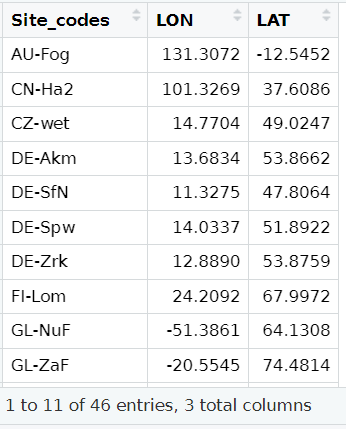
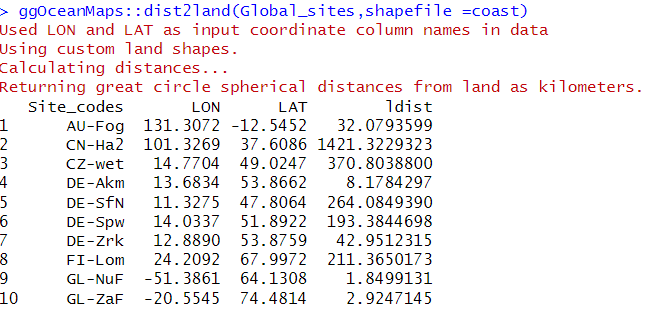 ldist is the shortest distance (kilometers).
ldist is the shortest distance (kilometers). (截图自草蛉下蛋视频 from the video:https://youtu.be/ByQo-TpYpxg)
(截图自草蛉下蛋视频 from the video:https://youtu.be/ByQo-TpYpxg) 蠼螋和它的窝 Earwig and its nest(图片来源 source:https://m.hh-pmp.com/h-nd-323.html#&gid=1&pid=2)
蠼螋和它的窝 Earwig and its nest(图片来源 source:https://m.hh-pmp.com/h-nd-323.html#&gid=1&pid=2) (Public domain photo)
(Public domain photo) (截图自视频 screenshot from the video:
(截图自视频 screenshot from the video:  Cyclops features a long antennae屁股上带着剑和两个粉色大囊的剑水蚤(图片来源source:
Cyclops features a long antennae屁股上带着剑和两个粉色大囊的剑水蚤(图片来源source: 雄性油甲虫 Male oil-beetle( 来自维基百科Source:
雄性油甲虫 Male oil-beetle( 来自维基百科Source:  蚁狮 Antlion(来源自维基百科 source: https://upload.wikimedia.org/wikipedia/commons/thumb/1/1b/A_ant-lion_8946.jpg/200px-A_ant-lion_8946.jpg)
蚁狮 Antlion(来源自维基百科 source: https://upload.wikimedia.org/wikipedia/commons/thumb/1/1b/A_ant-lion_8946.jpg/200px-A_ant-lion_8946.jpg) 帝王蛾幼虫 Caterpillar of emperor moths(图片来源 source:https://butterfly-conservation.org/moths/emperor-moth)
帝王蛾幼虫 Caterpillar of emperor moths(图片来源 source:https://butterfly-conservation.org/moths/emperor-moth) 雄性 Male(图片来源 source:https://zh.wikipedia.org/wiki/%E8%8B%8D%E5%A4%B4%E7%87%95%E9%9B%80#/media/File:Chaffinch_(Fringilla_coelebs).jpg)
雄性 Male(图片来源 source:https://zh.wikipedia.org/wiki/%E8%8B%8D%E5%A4%B4%E7%87%95%E9%9B%80#/media/File:Chaffinch_(Fringilla_coelebs).jpg) 雄性 Male(图片来源 source:https://zhuanlan.zhihu.com/p/110718017)
雄性 Male(图片来源 source:https://zhuanlan.zhihu.com/p/110718017) 图片来源 source:http://cfb.unh.edu/cfbkey/html/Organisms/CCladocera/FDaphnidae/GCeriodaphnia/Ceriodaphnia_laticaudata/ceriodaphnialaticaudata.html)
图片来源 source:http://cfb.unh.edu/cfbkey/html/Organisms/CCladocera/FDaphnidae/GCeriodaphnia/Ceriodaphnia_laticaudata/ceriodaphnialaticaudata.html) 图片来源 source:维基百科 (https://upload.wikimedia.org/wikipedia/commons/3/37/Flickr_-_Rainbirder_-_Golden_Jackal_%281%29.jpg)
图片来源 source:维基百科 (https://upload.wikimedia.org/wikipedia/commons/3/37/Flickr_-_Rainbirder_-_Golden_Jackal_%281%29.jpg) 图片来源 source:维基百科 (https://en.wikipedia.org/wiki/Nightjar#/media/File:Great_Eared-Nightjar,_Tangkoko,_Sulawesi_(5799113025)_(2).jpg)
图片来源 source:维基百科 (https://en.wikipedia.org/wiki/Nightjar#/media/File:Great_Eared-Nightjar,_Tangkoko,_Sulawesi_(5799113025)_(2).jpg) 金色眼睛外加一对像招风耳的毛角的角鸮 A scops owl with golden eyes(图片来源 source:百度百科 https://baike.baidu.com/pic/%E8%A7%92%E9%B8%AE/5023907/1393335/4034970a304e251f1e37fd0ba786c9177e3e5304?fr=lemma&ct=cover#aid=1393335&pic=21a4462309f79052b6177f270ef3d7ca7bcbd59a)
金色眼睛外加一对像招风耳的毛角的角鸮 A scops owl with golden eyes(图片来源 source:百度百科 https://baike.baidu.com/pic/%E8%A7%92%E9%B8%AE/5023907/1393335/4034970a304e251f1e37fd0ba786c9177e3e5304?fr=lemma&ct=cover#aid=1393335&pic=21a4462309f79052b6177f270ef3d7ca7bcbd59a) (图片来源 source:https://www.tastecooking.com/pea-crabs-offal-of-the-sea-the-redneck-toothpick/)
(图片来源 source:https://www.tastecooking.com/pea-crabs-offal-of-the-sea-the-redneck-toothpick/) (图片来源 source:https://alchetron.com/Serpula)
(图片来源 source:https://alchetron.com/Serpula)
 图片来源 source:维基百科(https://en.wikipedia.org/wiki/Common_snipe)
图片来源 source:维基百科(https://en.wikipedia.org/wiki/Common_snipe) (图片来源 source:维基百科 https://en.wikipedia.org/wiki/Woodcock)
(图片来源 source:维基百科 https://en.wikipedia.org/wiki/Woodcock) 图片来源 source:https://janetomlinson.com/artworks/british-finches/
图片来源 source:https://janetomlinson.com/artworks/british-finches/ 图片来源:https://www.thebritishbirds.com/birds/blackbird/
图片来源:https://www.thebritishbirds.com/birds/blackbird/ Blue rock thrush(图片来源 source:百度百科 baidu baike)
Blue rock thrush(图片来源 source:百度百科 baidu baike) 左 left:飞翔的成年喜鹊;adult. 右 right: 喜鹊宝宝 baby bird(图片来源 source:维基百科 https://zh.wikipedia.org/wiki/%E5%96%9C%E9%B9%8A)
左 left:飞翔的成年喜鹊;adult. 右 right: 喜鹊宝宝 baby bird(图片来源 source:维基百科 https://zh.wikipedia.org/wiki/%E5%96%9C%E9%B9%8A) 大黑背鸥 Great black-back gull (图片来源 source:维基百科https://en.wikipedia.org/wiki/Great_black-backed_gull#/media/File:Great_Black-backed_Gull_Larus_marinus.jpg)
大黑背鸥 Great black-back gull (图片来源 source:维基百科https://en.wikipedia.org/wiki/Great_black-backed_gull#/media/File:Great_Black-backed_Gull_Larus_marinus.jpg) Fig. 1 Initial data example
Fig. 1 Initial data example Fig. 2 Data arrangement in R.
Fig. 2 Data arrangement in R.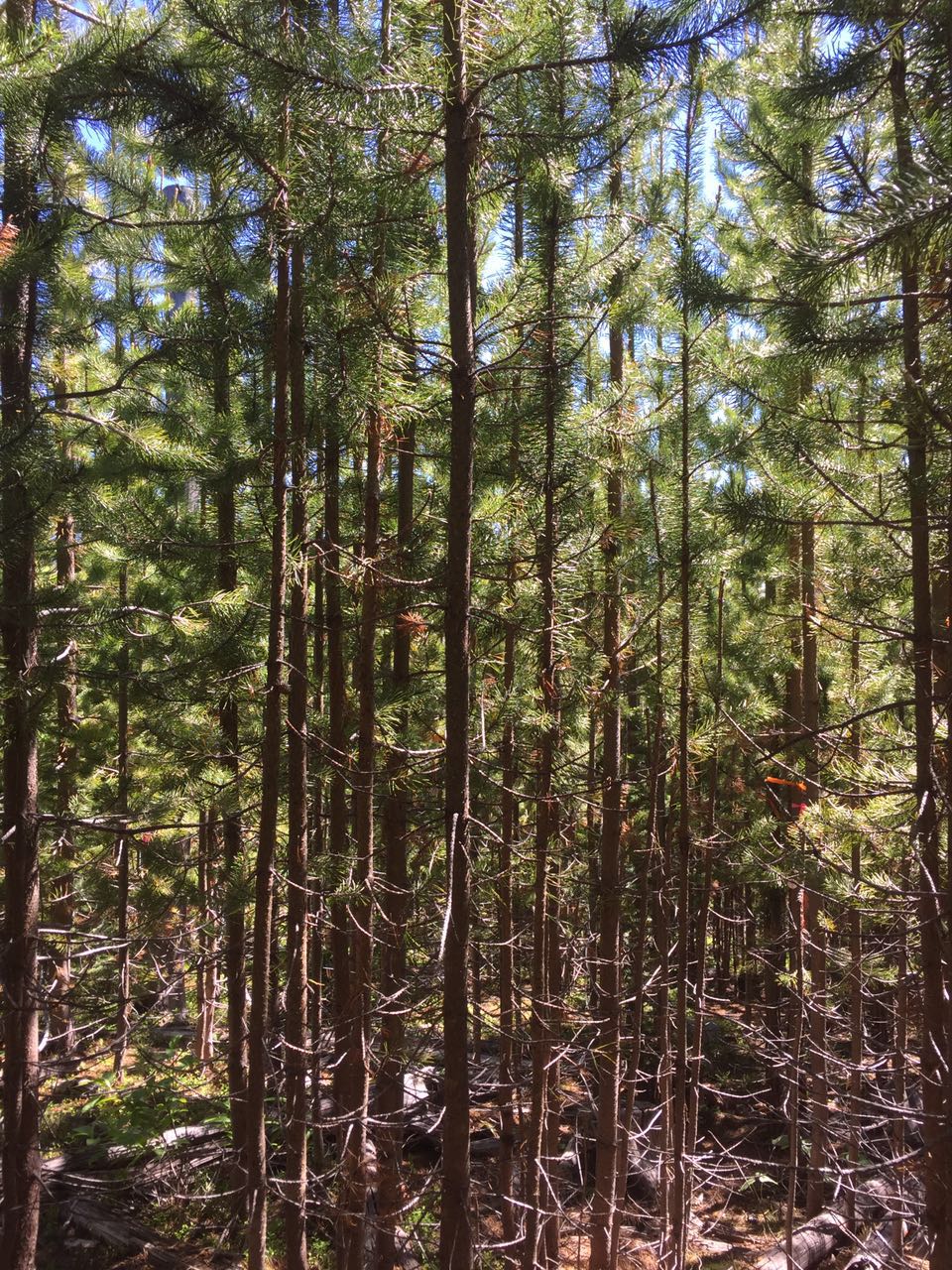 Fig. 1 Photo of B1C at June, 26, 2017
Fig. 1 Photo of B1C at June, 26, 2017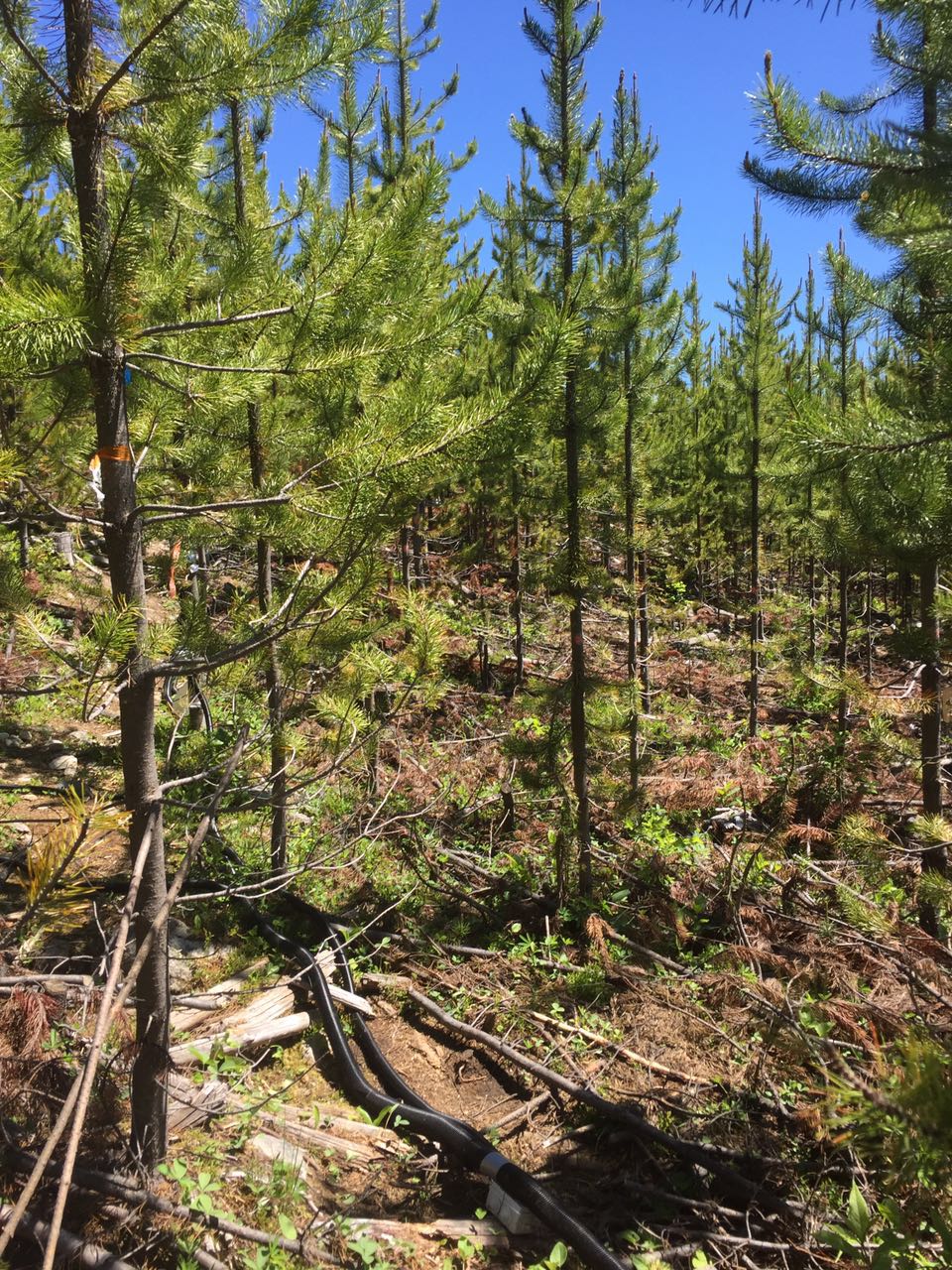 Fig. 2 Photo of B1T1 at June, 26, 2017
Fig. 2 Photo of B1T1 at June, 26, 2017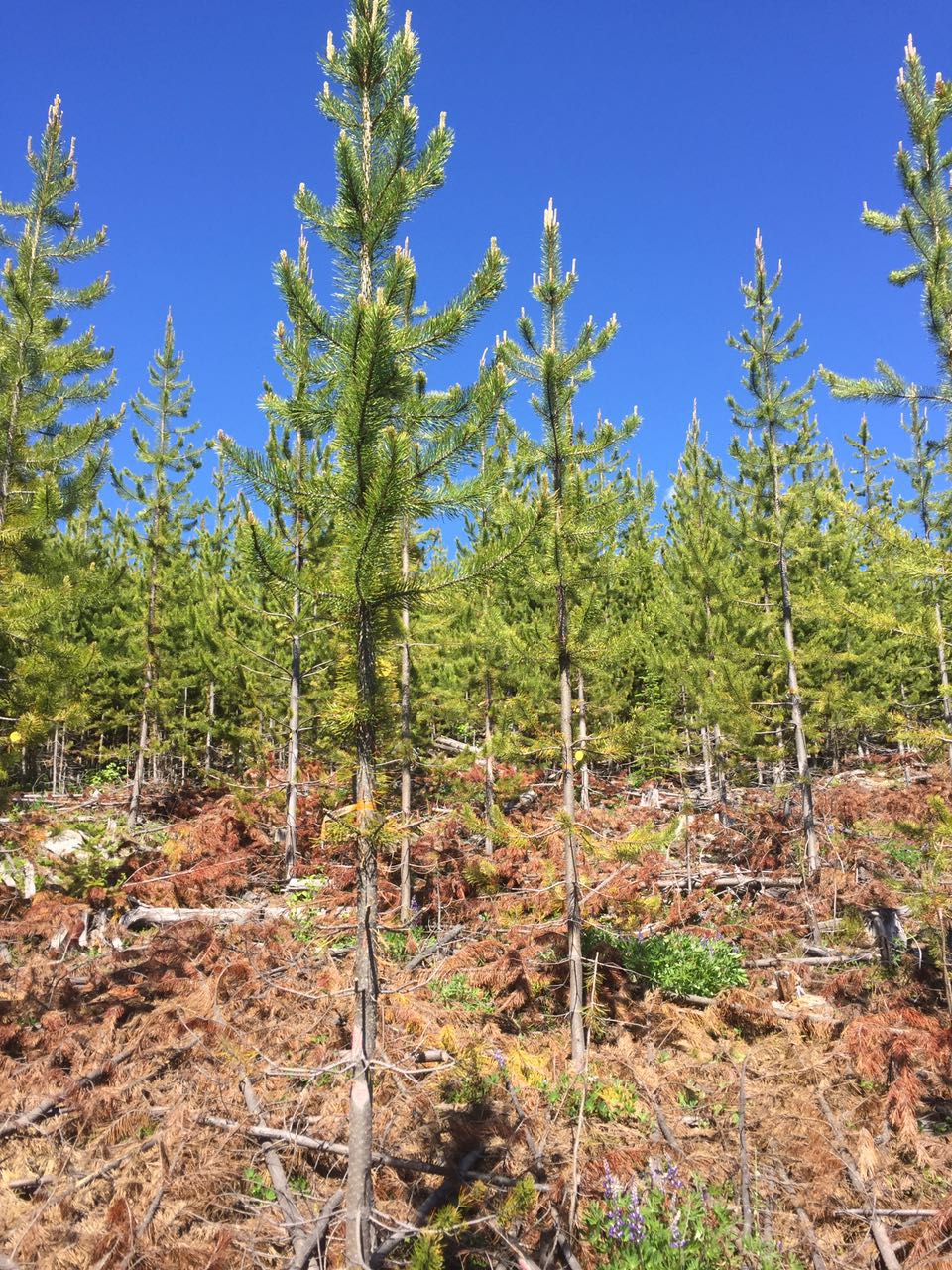 Fig. 3 Photo of B1T2 at June, 26, 2017
Fig. 3 Photo of B1T2 at June, 26, 2017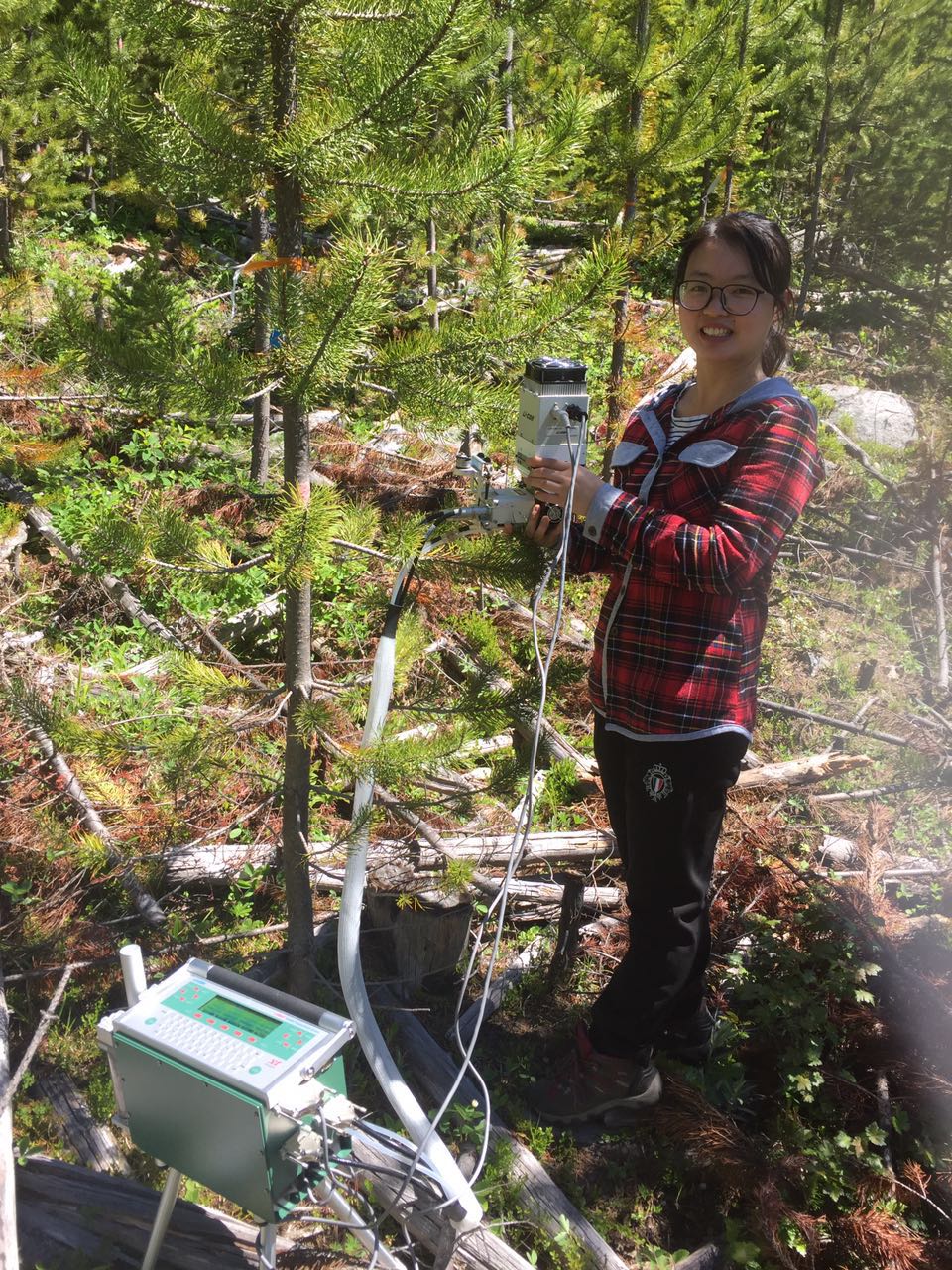
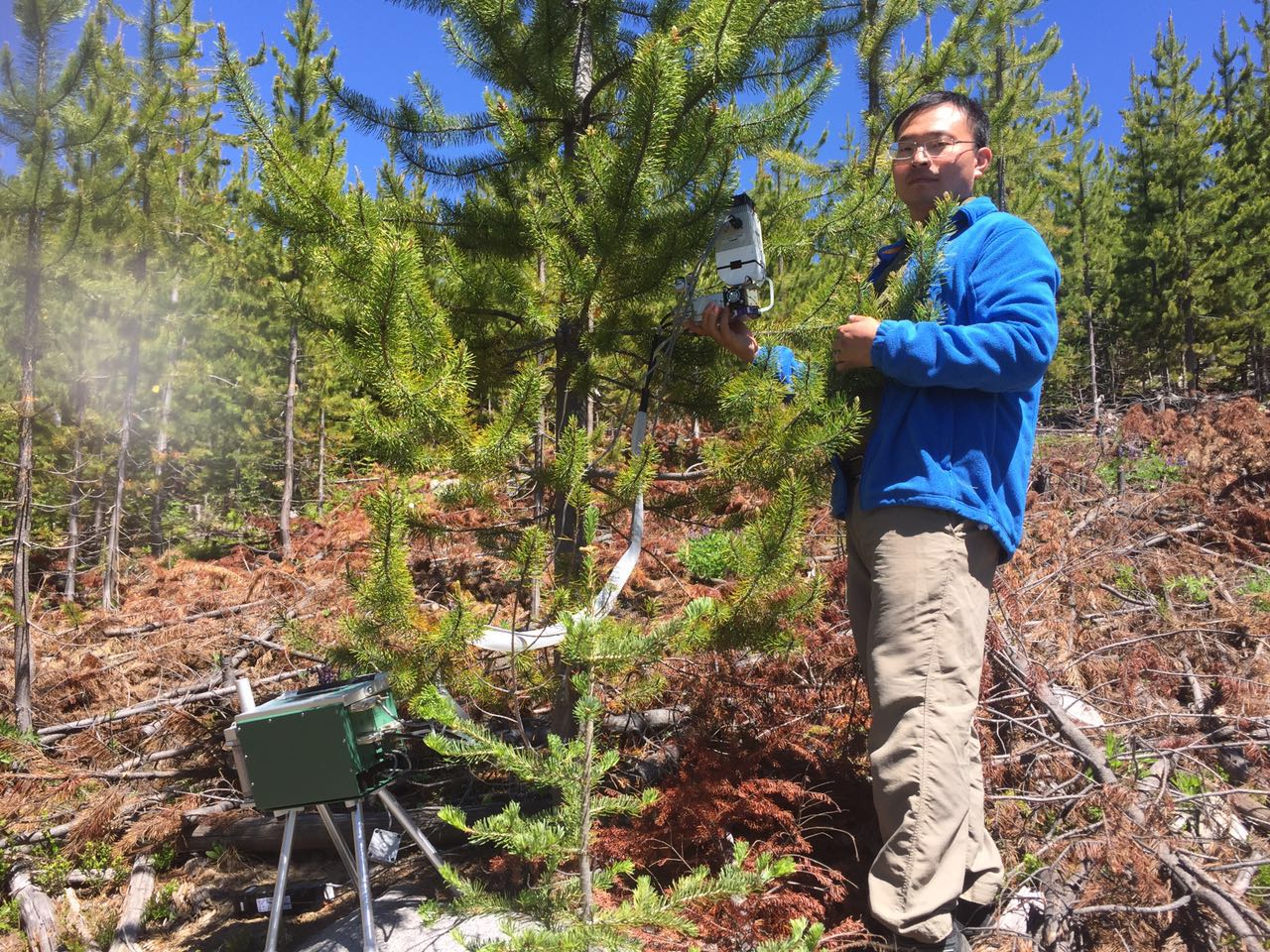 Fig. 4 Dr. Wu and I took turns to hold the conifer chamber.
Fig. 4 Dr. Wu and I took turns to hold the conifer chamber.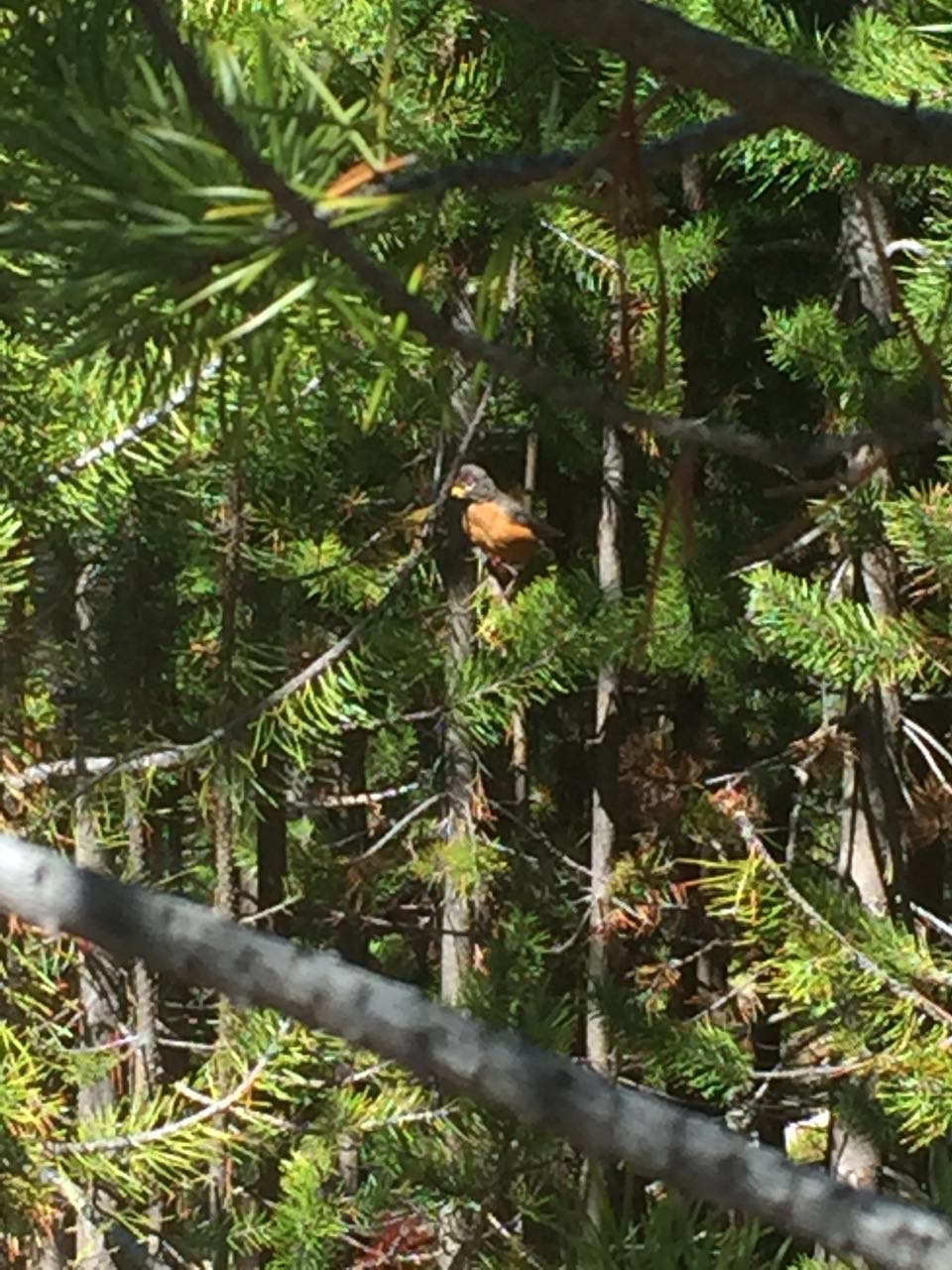

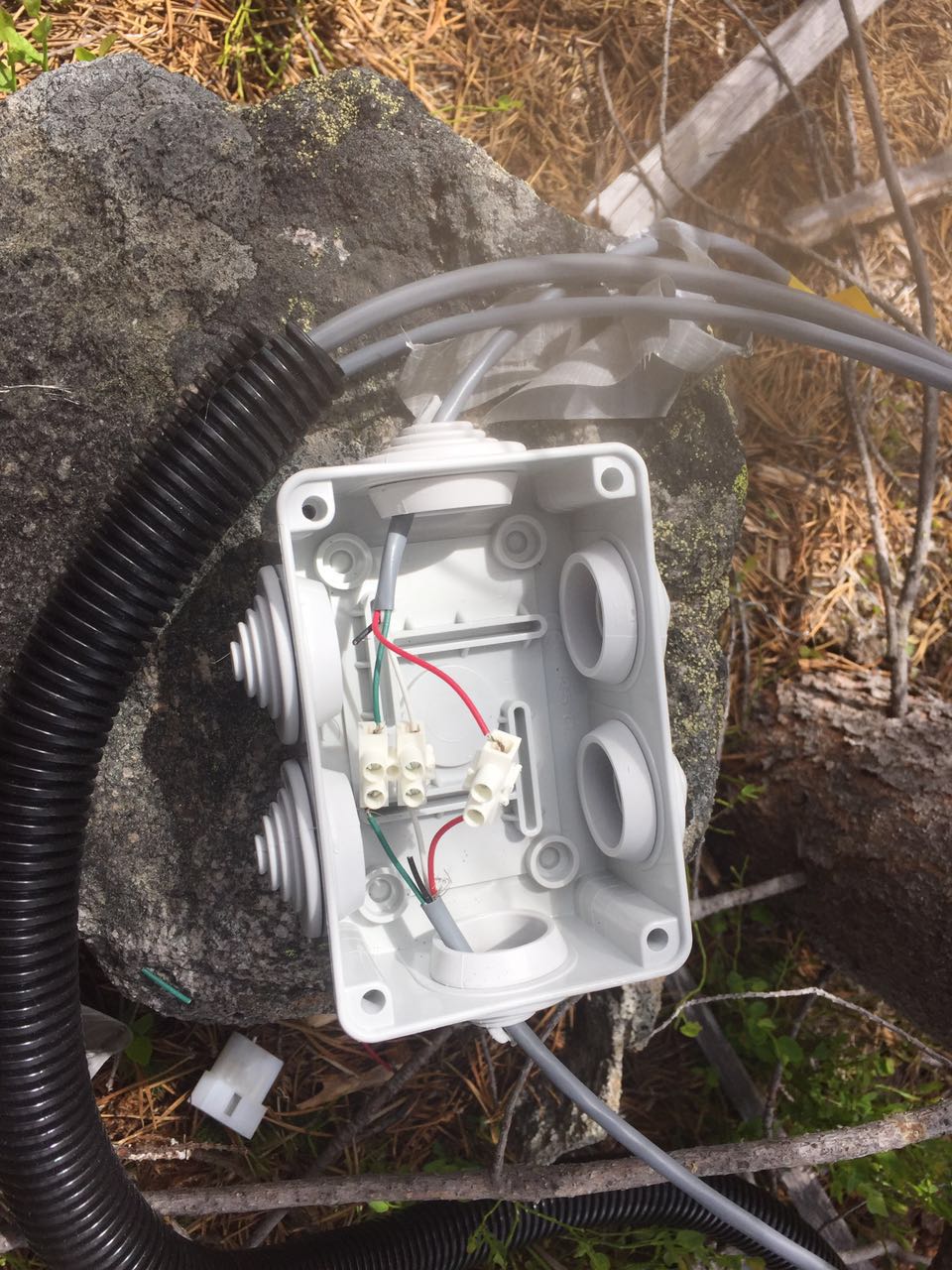 Fig. 1 replacing detachable connectors with ordinary ones and junction boxes
Fig. 1 replacing detachable connectors with ordinary ones and junction boxes Fig. 2 Broken sap flow probe in tree No.3
Fig. 2 Broken sap flow probe in tree No.3

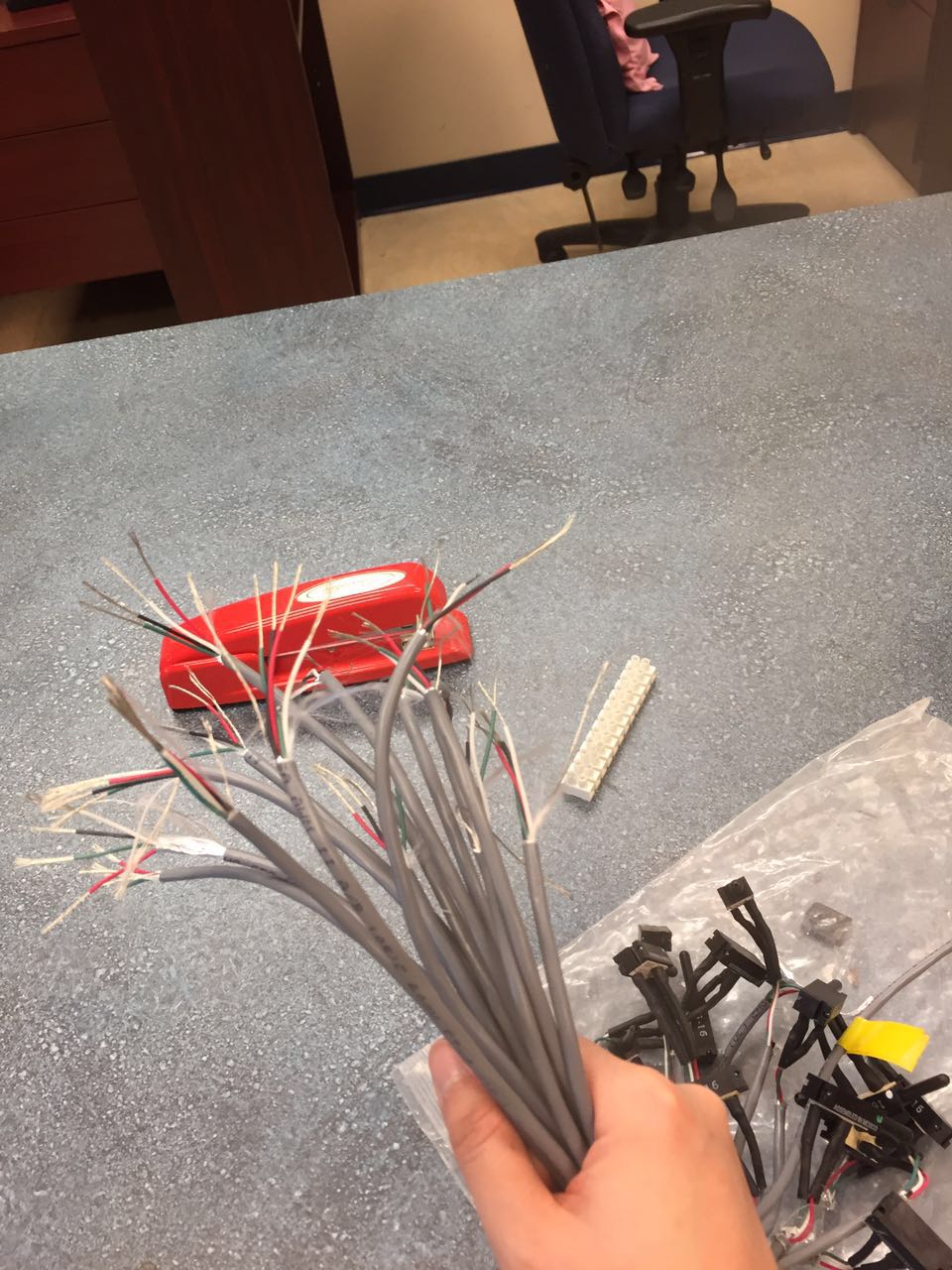 Fig. 1 Wire preparation in the labs
Fig. 1 Wire preparation in the labs
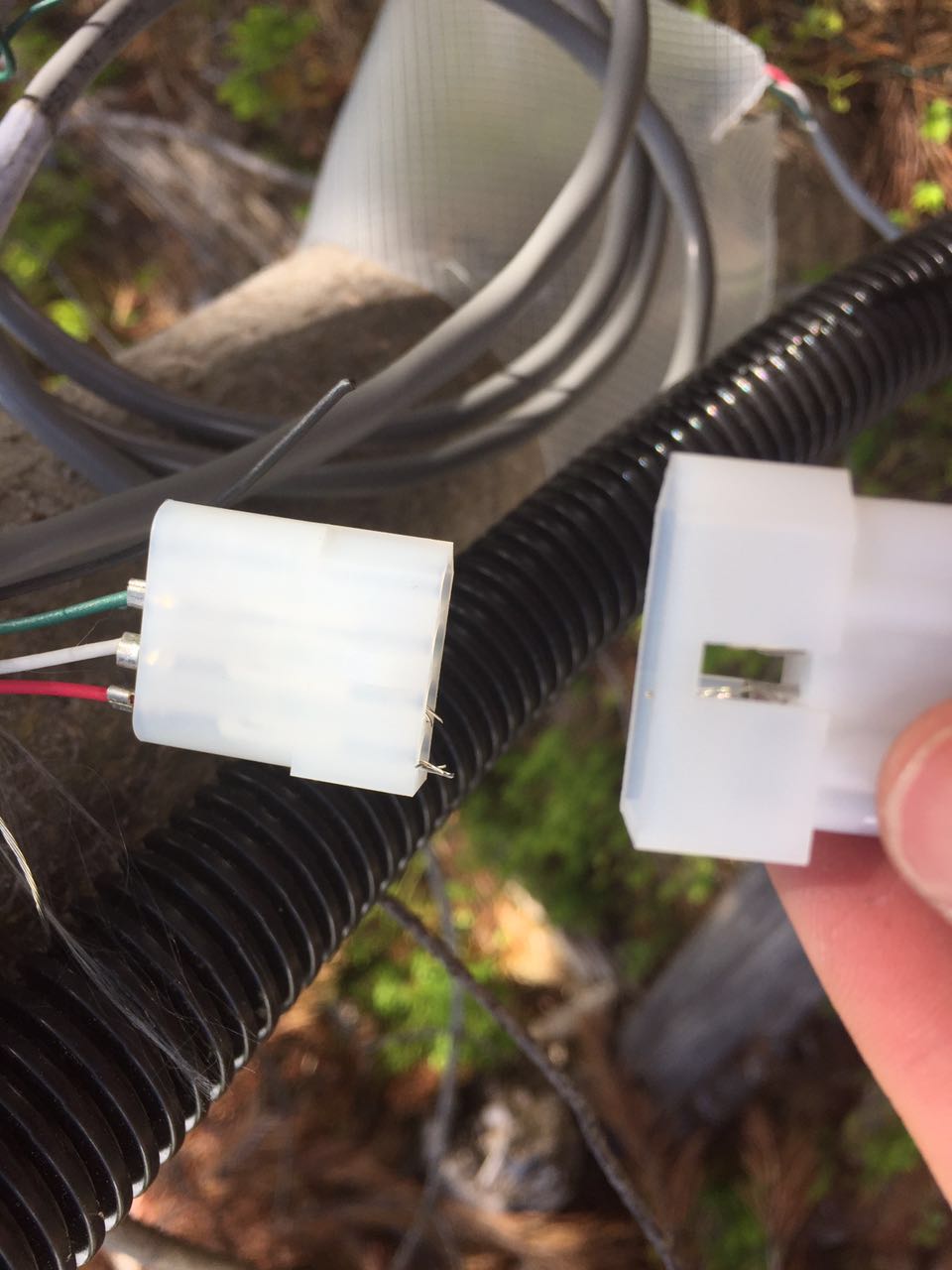 Fig. 2 Non-detachable connectors (left) and detachable connectors (right).
Fig. 2 Non-detachable connectors (left) and detachable connectors (right). Fig. 3 Junction boxes I put on the desk in my lab.
Fig. 3 Junction boxes I put on the desk in my lab. Fig. 4 Site condition at June, 09, 2017
Fig. 4 Site condition at June, 09, 2017 Fig.5 Band dendrometer sensor connection.
Fig.5 Band dendrometer sensor connection. Fig .6 It was hard to take a selfie in the field!!!
Fig .6 It was hard to take a selfie in the field!!!